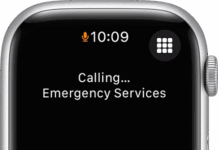 An organization’s planning and executing soft skills training is a challenge. But tackling this challenge becomes much easier when you have the right method of training and development. Microlearning is one method that may help you deliver soft skills training effectively and efficiently to your employees.
An organization’s planning and executing soft skills training is a challenge. But tackling this challenge becomes much easier when you have the right method of training and development. Microlearning is one method that may help you deliver soft skills training effectively and efficiently to your employees.
Furthermore, every time employees learn and effectively apply a new soft skill through microlearning, they experience a minor victory. It is a great way to enhance your soft skill as it delivers content in short, manageable chunks that learners can easily digest.
This article will decode what is microlearning and how it can support the development of soft skills at your company.
What Is Microlearning?
Microlearning is a learning strategy that delivers content in short, focused bursts. It is frequently distributed through digital platforms like apps or websites and is intended to be consumed quickly.
Microlearning can support the development of soft skills in several ways. For instance, it can deliver just-in-time training on specific topics, such as customer service or communication.
It can reinforce learning by providing small bits of information regularly, helping employees retain what they’ve learned better. Microlearning can also evaluate employee knowledge levels and pinpoint areas that might benefit from additional training.
With microlearning content, employees can learn at their own pace and in a way that fits into their busy schedules. This type of learning also allows for greater customization and personalization so that employees can focus on the most relevant topics.
What Is Soft Skills Training?
Soft skills training covers various topics, from communication and team-building to conflict resolution and leadership.
Microlearning is highly engaging and interactive, which helps learners in acquiring the soft skills required for success when combined with other learning strategies like traditional coaching or mentoring. It can provide concise, targeted content that employees can access on demand.
Employees often need more time for traditional, long-form training sessions, which is lacking in today’s fast-paced business world. With microlearning, they can learn new concepts quickly and without feeling overwhelmed.
How Can Microlearning Support The Development Of Soft Skills?
Organizations are under pressure to provide employees with opportunities to develop soft skills. Microlearning can support the development of soft skills in several ways.
It can deliver just-in-time training that helps employees access the information they need when they need it. For example, if employees need to brush up on their communication skills before dealing with a demanding customer, they can access a microlearning module on communication.
Microlearning can also be used to provide employees with practice opportunities. For instance, if employees need to practice giving feedback, they can access a microlearning module that provides them with opportunities to do so in a safe and controlled environment.
Lastly, microlearning can be used to assist employees in evaluating their development and determining areas that require more work. An employee could, for instance, take an assessment to find out their strengths and weaknesses in customer service after completing a microlearning module on the subject.
What Are Some Instances Of Microlearning Activities That Support The Development Of Soft Skills?
Microlearning activities that support the development of soft skills can include the following:
- Developing a better understanding of yourself and others through personality assessments
- Practicing active listening and communication skills in small group sessions
- Role-playing to improve customer service skills or build confidence in public speaking
- Using everyday opportunities to practice leadership qualities such as delegating tasks or giving constructive feedback.
The Benefits Of Microlearning For Soft Skills Training

Microlearning is an instructional strategy that can help develop soft skills by giving learners digestible information they can immediately apply to their work. There are several benefits to using microlearning for soft skills training:
- Keeps Up With Short Attention Spans Online
It can be challenging to keep people’s attention when they’re constantly bombarded with new information online. That’s where microlearning comes in.
As we know, microlearning is a way of delivering content in short, easily digestible pieces. It makes it perfect for busy learners who want to learn new skills or brush up on existing ones quickly.
There are many ways to use microlearning to support soft skills development. For instance, you could create short videos or articles on topics like time management, effective communication, or conflict resolution. You could also develop infographics or brief quizzes to assess learners’ knowledge and aid in their retention of what they have learned.
Whatever approach you take, microlearning can be an effective way to help learners develop the soft skills they need to succeed.
- Perfect For Employees’ Busy And Differing Schedules
Microlearning is a great tool for soft skill development because organizations can customize it to each employee’s needs and schedules. Employees don’t have to take out time in between their busy workdays to complete their training. Instead, they can finish their tasks on hand and consume training content when they have time available.
- Keeps Up With The Organizational Objectives
Microlearning can support soft skills development by offering employees timely, pertinent information they can absorb and use in their daily work, helping them to achieve their company objectives. Consequently, this will help you achieve your goals.
Microlearning modules can be created quickly and easily, making them ideal for busy employees who need to keep up with the organization’s objectives. The most pertinent and helpful information can be delivered to each learner by tailoring microlearning to their individual needs.
- Allows Learners To Apply Soft Skills Immediately
One of the main advantages of microlearning is that it enables learners to use soft skills immediately. Learners can quickly put new skills into practice and see results.
Soft skills are frequently best acquired through experience, which is especially advantageous for their development. By immediately applying new soft skills, learners can get first-hand knowledge of how they work in the real world. It helps them refine their skills and develop greater mastery over time.
It also means that microlearning can effectively develop soft skills for people who may not have access to traditional training opportunities. For instance, employees based in remote locations or work shifts can benefit from learning new skills on their schedule.
Conclusion
Microlearning is a great way to encourage growth in your organization’s soft skills. It is ideal for busy workers because of its digestible, bite-sized content that can be finished in short bursts. The needs of your business can also be catered to through microlearning, ensuring the information is pertinent and helpful to your employees. If you’re looking for a way to improve soft skill development in your company, microlearning is a great option.


















